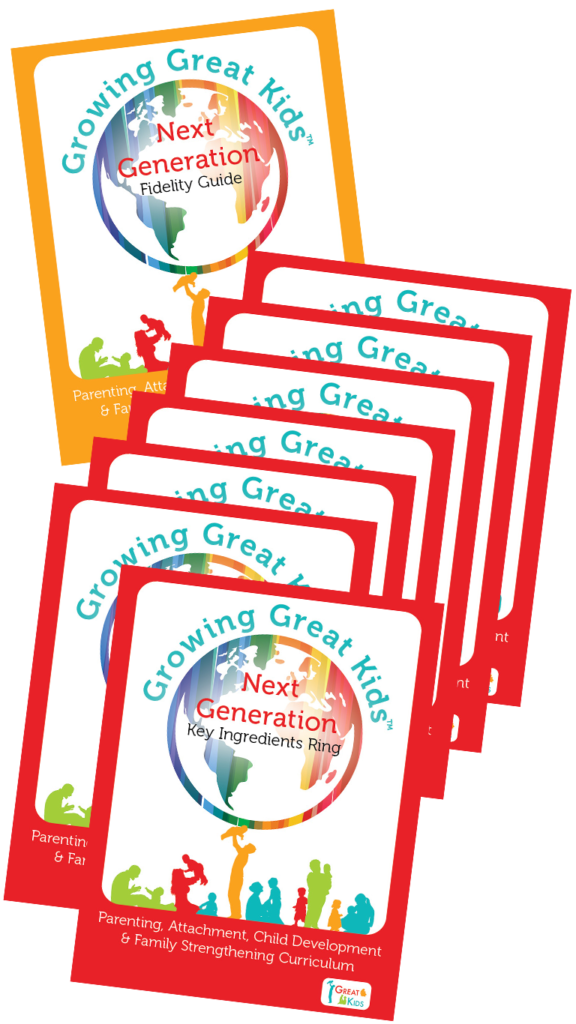
As the end of the year grows closer, many of us find ourselves celebrating the holiday season by gathering together to spend time with family and friends. Though this time of year can create cherished memories, many parents find themselves feeling overwhelmed, especially when they introduce their infants and toddlers to new people. Loved ones are often excited and eager to meet new members of the family or visit with young family members they seldom see throughout the year. However, infants and toddlers don’t always share the same feelings.
Most of us have been to a social gathering where a family member with the best intentions greets the 8-month-old baby with a huge smile and a clap of the hands. This interaction is usually followed by a look of terror on the baby’s face, while tears stream down their cheeks and the baby does their best to hide away in their parent’s arms. We’ve all probably witnessed something like this and even though parents might worry that their baby’s reaction is abnormal, caregivers can be assured that this interaction is a part of typical development for infants.
Adults are often comforted by spending time with loved ones that they haven’t visited in a while. However, infants and children can be fearful of new people or individuals who aren’t their parents. The American Academy of Pediatrics (AAP) (2009) tells us that around 8 months of age, infants begin to feel anxiety around strangers. This can be confusing for parents because once their newborn might have snuggled with anyone who wanted to hold them, even new people they had never met before. It might seem strange to think about, but pediatricians consider stranger anxiety to be an emotional milestone for infants.
When children begin nearing the first year of life, they start to realize that their parents will not always be with them, which creates a fear of people they don’t know very well. (Harvard Health Publishing Harvard Medical School, 2007). The Canadian Paediatric Society (CPS) (2016) also shares that when infants are around this age, they begin to understand the difference between situations that are familiar and unfamiliar to them. As babies begin to realize they’re experiencing a different situation than they are used to, stranger anxiety can occur.
During this stage of development, infants are also becoming more aware of their relationship with their parents and they view them as safe and familiar (University of Pittsburgh Office of Child Development; U.S. National Library of Medicine, 2018) Due to this, children might even begin to show anxiety around relatives or childcare providers that they have met before. Pediatricians remind us that is also normal for babies in this stage of development (AAP, 2009).
As infants work through their newly developed fears of unfamiliar people, it might seem like their stranger anxiety will never pass. Luckily, the experts tell us that ALL children experience temporary fears as a completely normal part of their development (CPS, 2016; National Scientific Council on the Developing Child, 2010). Though it might seem like your child will never overcome their fear of their childcare provider or your extended family members, rest assured, most children eventually outgrow their childhood fears (Harvard Health Publishing Harvard Medical School, 2005). In fact, there are even some steps that parents can take in helping their infants and toddlers work through their stranger anxiety.
Stranger Anxiety Tips from the Experts!
- Introduce your baby to new people from the comfort of your own arms. You can even ask the new person to approach your baby with caution, while holding one of your baby’s favorite toys or books.
- Prepare family members and friends for your infant’s reaction to their company. You might explain to them that it is a normal part of development for infants to express fears around unfamiliar people that are not their parents.
- Show your child that you care about their fear. Avoid ignoring the fear as this might strengthen your baby’s fear of new people.
- Encourage family members and friends to warm up to your infant from a distance before trying to pick them up or get closer.
- Remember that learning to interact with new people takes time. Be patient with your baby as they learn how to cope with meeting unfamiliar people. Rushing babies to feel comfortable around new people might make them even more sensitive to strangers.
(Parlakian & Lerner, 2016; University of Pittsburgh Office of Child Development, n.d.)
I hope that these tips are helpful during this busy holiday season as you gather with friends and families. If you are a home visitor who uses Great Kids’ Curriculum, please take a look at our subsection Separation/Stranger Anxiety, which can be found in the Birth-12 Months Manual under the 7-9 Months: Social and Emotional Development module. This subsection can support parents with how to handle stranger anxiety with their babies. Please know that if parents ever have concerns that their infant’s fears do not seem typical or they do not outgrow their fears, you can always refer parents to their child’s healthcare provider.
I thank you for taking time to read our blog for this month. I hope you stop by in January to read about our next topic. In the meantime, I wish you a wonderful end to the year and hope that you have a lovely holiday season.
References
American Academy of Pediatrics. (2009, August 01). Emotional and social development: 8
to 12 months. Retrieved from https://www.healthychildren.org/English/ages-
stages/baby/Pages/Emotional-and-Social-Development-8-12-Months.aspx
Canadian Paediatric Society. (2016, November). Taming the monsters: Helping children
deal with their fears. Retrieved from https://www.caringforkids.cps.ca/handouts/
taming_the_monsters
Harvard Health Publishing Harvard Medical School. (2005, January). Children’s fears and
anxieties. Retrieved from https://www.health.harvard.edu/childrens-health/
childrens-fears-and-anxieties
Harvard Health Publishing Harvard Medical School. (2007, January). Separation anxiety.
Retrieved from https://www.health.harvard.edu/newsletter_article/Separation_
anxiety
Lerner, C. & Parlakian, R. (2016, February 18). Children with shy or slow to warm up
temperaments. Retrieved from https://www.zerotothree.org/resources/198-
children-with-shy-or-slow-to-warm-up-temperaments
National Scientific Council on the Developing Child. (2010). Persistent fear and anxiety
can affect young children’s learning and development: Working paper No. 9.
Retrieved from https://developingchild.harvard.edu/wp-content/uploads/
2010/05/Persistent-Fear-and-Anxiety-Can-Affect-Young-Childrens-Learning-
and-Development.pdf
Parlakian, R. & Lerner, C. (2016, May 12). From baby to big kid: Month 8. Retrieved from
https://www.zerotothree.org/resources/1236-from-baby-to-big-kid-month-8
University of Pittsburgh Office of Child Development. (n.d.). Stranger anxiety. Retrieved
from http://www.ocd.pitt.edu/files/pdf/foster/27758_ocd_stranger_anxiety.pdf
U.S. National Library of Medicine. (2018, November 13). Separation anxiety in children.
Retrieved from https://medlineplus.gov/ency/article/001542.htm

